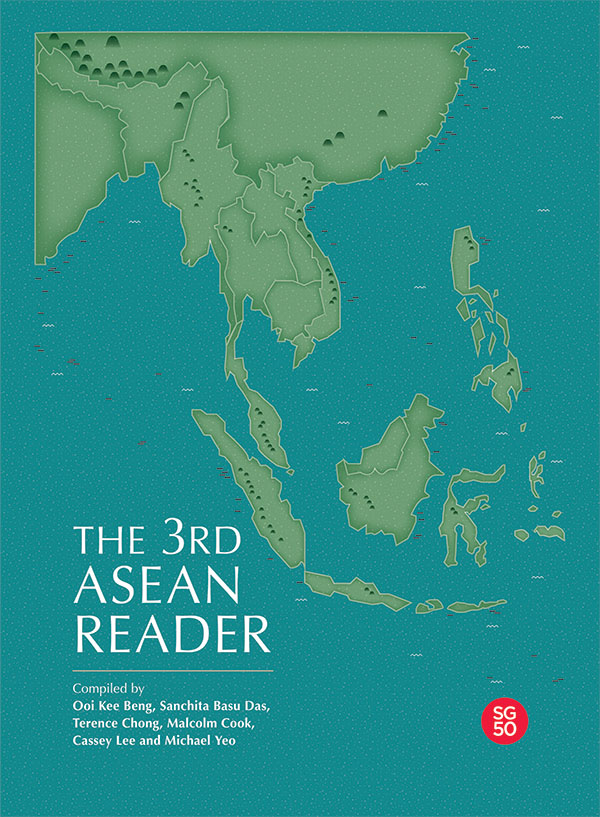Book contents
- Frontmatter
- Contents
- Preface
- Forewords to the First and Second ASEAN Reader: ASEAN: Conception and Evolution
- Forewords to the First and Second ASEAN Reader: ASEAN: The Way Ahead
- Forewords to the First and Second ASEAN Reader: New Challenges for ASEAN
- SECTION I ASEAN: THE LONG VIEW
- Section Introduction by
- 1 Southeast Asia and Foreign Empires
- 2 The Evolving Nature of ASEAN's Economic Cooperation: Original Vision and Current Practice
- 3 The Evolving Nature of ASEAN's Economic Cooperation: Original Vision and Current Practice
- 4 From Political/Security Concerns to Regional Economic Integration
- SECTION II COUNTRY ANALYSES
- SECTION III COMPARATIVE ANALYSES OF THE REGION
- Southeast Asian Societies
- The Southeast Asian Economy
- Southeast Asian Politics
- SECTION IV INTERNATIONAL DEVELOPMENTS
- SECTION V INSTITUTIONS OF ASEAN
- SECTION VI ASSESSING ASEAN'S INTERNAL POLICIES
- ASEAN Political Security Community
- ASEAN Economic Community
- ASEAN Socio-Cultural Community
- SECTION VII ASSESSING ASEAN'S EXTERNAL INITIATIVES
- ASEAN Processes
- ASEAN's Major Power Relations
- SECTION VIII SOUTHEAST ASIA: PERIPHERAL NO MORE
- Bibliography
- The Contributors
- The Compilers
Section Introduction by
from SECTION I - ASEAN: THE LONG VIEW
Published online by Cambridge University Press: 22 June 2017
- Frontmatter
- Contents
- Preface
- Forewords to the First and Second ASEAN Reader: ASEAN: Conception and Evolution
- Forewords to the First and Second ASEAN Reader: ASEAN: The Way Ahead
- Forewords to the First and Second ASEAN Reader: New Challenges for ASEAN
- SECTION I ASEAN: THE LONG VIEW
- Section Introduction by
- 1 Southeast Asia and Foreign Empires
- 2 The Evolving Nature of ASEAN's Economic Cooperation: Original Vision and Current Practice
- 3 The Evolving Nature of ASEAN's Economic Cooperation: Original Vision and Current Practice
- 4 From Political/Security Concerns to Regional Economic Integration
- SECTION II COUNTRY ANALYSES
- SECTION III COMPARATIVE ANALYSES OF THE REGION
- Southeast Asian Societies
- The Southeast Asian Economy
- Southeast Asian Politics
- SECTION IV INTERNATIONAL DEVELOPMENTS
- SECTION V INSTITUTIONS OF ASEAN
- SECTION VI ASSESSING ASEAN'S INTERNAL POLICIES
- ASEAN Political Security Community
- ASEAN Economic Community
- ASEAN Socio-Cultural Community
- SECTION VII ASSESSING ASEAN'S EXTERNAL INITIATIVES
- ASEAN Processes
- ASEAN's Major Power Relations
- SECTION VIII SOUTHEAST ASIA: PERIPHERAL NO MORE
- Bibliography
- The Contributors
- The Compilers
Summary
The history of Southeast Asia is a chequered one. Not only are we talking about a region dissected for several hundred years by colonial expediencies, we are also dealing with its bifurcated geography: the southern territories largely configured by coastal ways of life, and the northern territories by riverine and agricultural activities. The political systems and thoughts that flowed out of these were therefore understandably dissimilar. Layer upon layer of external influences placed over centuries are clearly evident, affecting various areas differently. The Indic and Buddhist kingdoms of old, for example, were overwhelmed by latter-day Muslim regimes in the archipelago, but not in continental Southeast Asia. Along the eastern coastline of Indo-China, it was a Sinic influence instead that remained strong for two millennia. In so-called modern times, European powers laid claim to whatever areas other European powers had not yet called their possession — at least until the Japanese expelled them in 1942.
The Europeans could not reclaim these liberated lands in 1945, and in the few places where they persisted — they could not hold them for long. Worse still, they could not reclaim their old authority. Thus, the region went through an essential transformation after the Second World War, and ended up as a jigsaw of nation-states, an alignment that suited some more than others. Since 1968, however, the ambition to construct a regional body — ASEAN — is being gradually fulfilled.
In this section, Wang Gungwu discusses how “Southeast Asia” evolved as a concept, and how — despite the trading routes that passed through the seas in the region — it was never as important as the continental silk route in Central Asia was. ASEAN, as Wang sees it, is also essentially different from the European Union and comparisons between the two should be made with caution. In his piece, Nicholas Tarling deliberates the history of regionalism in Southeast Asia, and the complex conditions under which the attempts at regional cooperation have operated. This is followed by Narongchai Akrasanee's revelation of the diplomatic context for key achievements in ASEAN's development towards economic integration. Finally, Rodolfo Severino — drawing upon his insider's knowledge on the workings of ASEAN as an organization — examines its development from its origins.
Information
- Type
- Chapter
- Information
- The 3rd ASEAN Reader , pp. 3 - 4Publisher: ISEAS–Yusof Ishak InstitutePrint publication year: 2015
